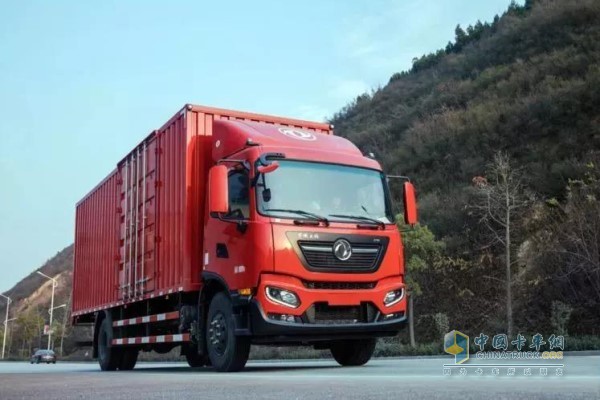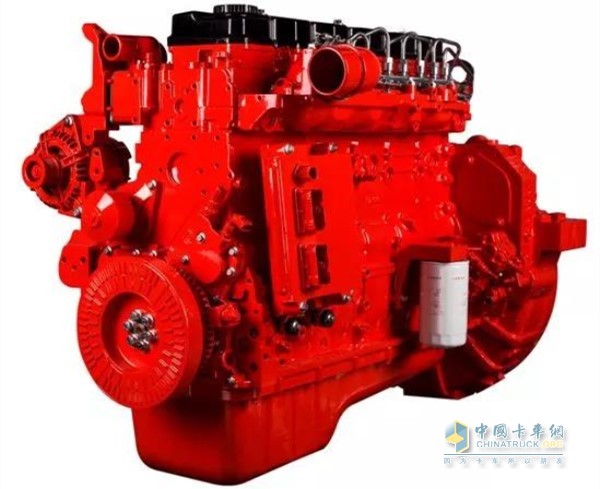On April 26-27, 2019, the Chengyu Express Fuel Consumption Challenge was held in Chengdu. The race car departed from a 4S store in Chengdu, from the Shuangliubei Toll Station to the expressway, via the Jingkun Expressway and the Chengdu Second Ring Expressway. After arriving at the Chongzhou toll station, the U-turn was returned. The whole stage was 100 kilometers, including 90 kilometers of high speed and 10 kilometers of national road. There were 14 traffic lights along the road. Before departure, Tianjin KR completed the counterweight and loaded sand and gravel. The total weight of the cargo was 18 tons. After the vehicle is in place, the fuel tank is emptied and 60 liters of diesel is injected. After the fuel tank is sealed at the notary office, the vehicle will arrive at the same position as the departure time, and then the oil in the fuel tank will be released and weighed. In the end, through the on-site inspection and calculation of the Chengdu Notary Public Office, the Tianjin KR matching the Dongfeng Cummins ISD engine successfully completed the challenge with a fuel consumption of 16.62 liters per 100 kilometers, completely exceeding expectations! Strength comes from the inner "core" large displacement and large horsepower Dongfeng Tianjin KR six-cylinder series models are equipped with Dongfeng Cummins ISD engine. The 6.7-liter displacement engine can output 245Ps powerful power and 950N·m super-strong torque, which makes the vehicle have fast start, strong climbing, high economic speed and transportation efficiency. High features! In addition, the ISD engine adopts Bosch high-pressure common rail fuel system, the injection pressure can be up to 1600 bar, the injection timing and fuel injection quantity control is more precise, the combustion is more complete, the economic fuel consumption area is wide, the fuel economy is greatly improved, and the low speed is further improved. Performance, noise reduction and cold start perform better. In addition to the ECU calibration optimization of the ISD engine, Tianjin KR also scientifically matches the gearbox and the rear axle to make the transmission efficiency higher and improve the fuel economy performance of the whole vehicle. The overall shape adopts CFD optimization design and the drag coefficient is as low as 0.498. Effective 2% fuel saving; standard low-resistance tires, can effectively save 3-4%! This is a comprehensive factor for Tianjin KR to win in the fuel-saving competition. Matching the Tianjin KR of the Dongfeng Cummins ISD engine, whether it is in the fresh green pass or in the LTL cold chain, or in the field of material flow, it has played a great role, it can do a little more, save some more One step ahead, such a good car brings real benefits to the card friends.
"Gravity Die Casting. A permanent mould casting process, where the molten metal is poured from a vessle of ladle into the mould, and cavity fills with no force other than gravity, in a similar manner to the production of sand castings, although filling cn be controlled by tilting the die."
Sometimes referred to as Permanent Mould, GDC is a repeatable casting process used for non-ferrous alloy parts, typically aluminium, Zinc and Copper Base alloys.
The process differs from HPDC in that Gravity- rather than high pressure- is used to fill the mould with the liquid alloy.
GDC is suited to medium to high volumes products and typically parts are of a heavier sections than HPDC, but thinner sections than sand casting.
There are three key stages in the process.
Advantages
Gravity Casting Parts,Aluminum Alloy Gravity Casting Parts,Aluminum Gravity Die Casting Parts,Gravity Casting Aluminum Parts HSI INDUSTRIEL LTD , https://www.hsiindustriel.com Matching Tianjin KR with Dongfeng Cummins ISD engine
Matching Tianjin KR with Dongfeng Cummins ISD engine  Chengdu Notary Office on-site inspection calculation
Chengdu Notary Office on-site inspection calculation  Dongfeng Tianjing KR six-cylinder series
Dongfeng Tianjing KR six-cylinder series
Gravity Die Casting
Xiao Bian introduced the "Training Race" to the card friends. Dongfeng Tianjin KR, which matches the Dongfeng Cummins ISD engine, won with an absolute advantage of 8 minutes and 12 seconds. It explains what is efficient! Today, Xiaobian introduces another one. The fuel-saving challenge, the goal is to match the Dongjin Cummins ISD engine's Tianjin KR challenge 18 liters of fuel consumption per 100 kilometers, the result of the challenge, and see the following decomposition.